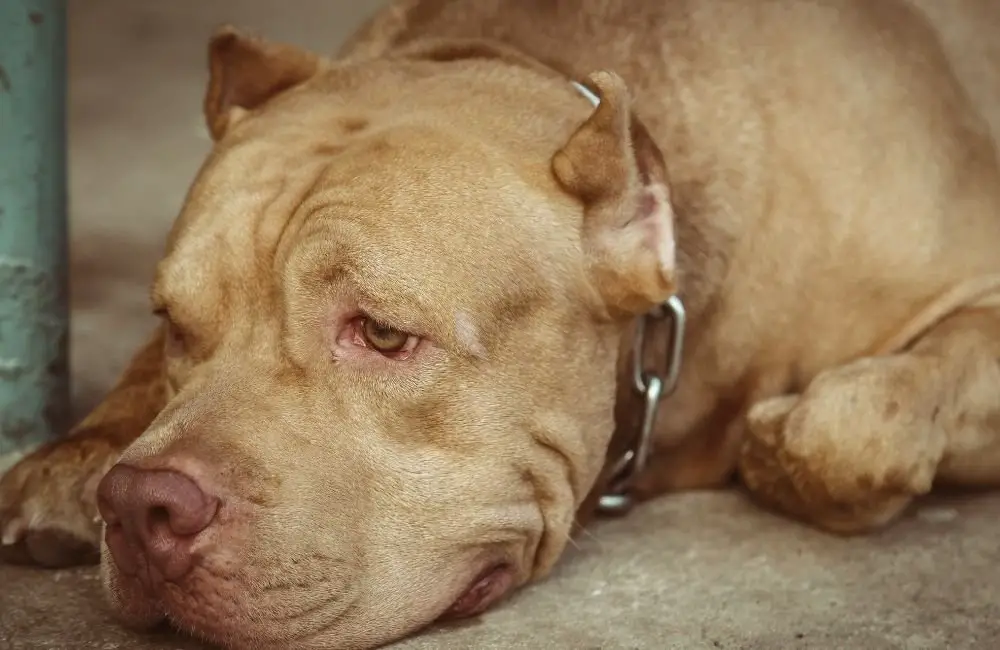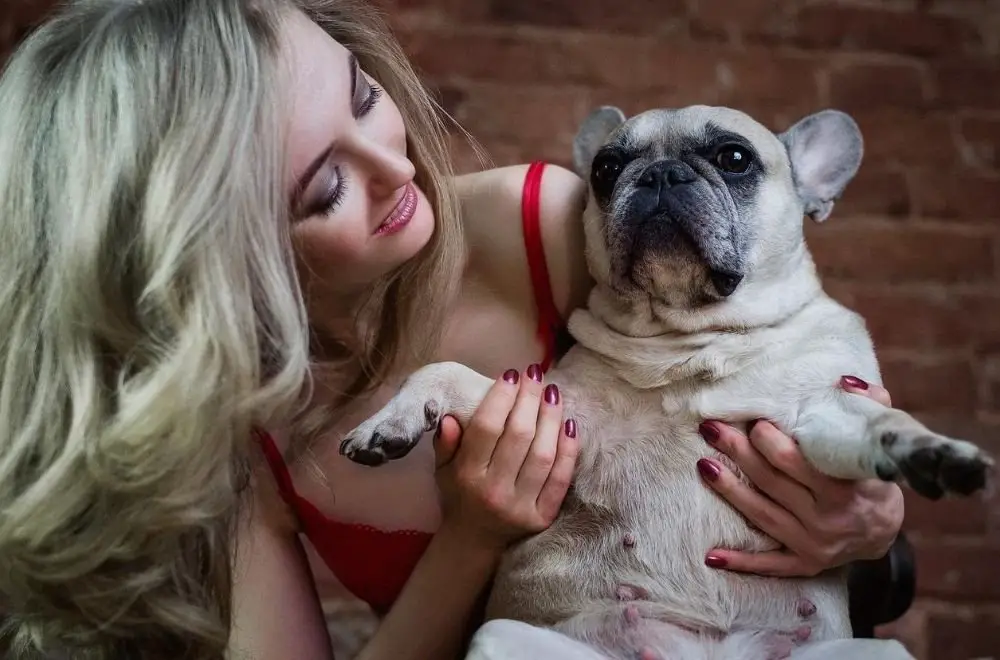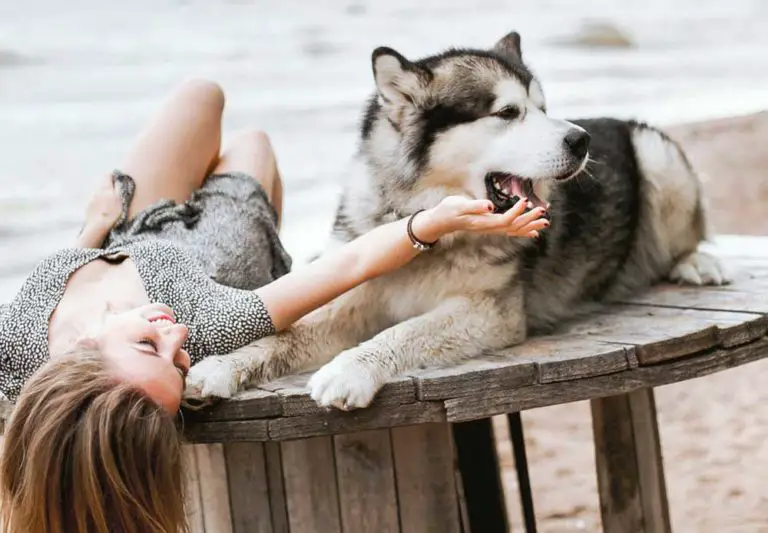Dog Depression: How To Cheer Up A Miserable Pup
Dogs have for years been a source of happiness for humankind.
They are closer to their human partners than any other pet, and that’s why they tend to know more about them than all other animals.
Based on several research studies, dogs are the only animal that can read the emotions on a human face.
At a glance, your pup can easily tell when you are sad or happy, when in the mood for a simple walk, and when not- and will act just accordingly.
To reciprocate that, we work hard to afford our furbabies the best life. Unfortunately, dogs don’t have a comprehensive way of venting out their issues to us.
That makes it quite hard for us to know what exactly they want and how to keep them happy.
But even before we focus on bringing them joy, it’s easy for one to wonder whether they get miserable in the first place. So, do dogs get sad? If yes, what are the signs that your canine is sad or depressed? What can we do to cheer them up?
Do Dogs Get Depression?
Since they are live beings, dogs have emotions like humans. They can get happy, sad, depressed, and anxious, just like their human partners.
However, since they don’t shed tears like humans, the ball is in the court of every pet parent to learn how to accurately interpret their dog’s feelings.
You have to know how to tell when your canine is happy, sad, depressed, and sick. With this knowledge, it’s easy to know the ideal steps to take to keep them happy and their lives more comfortable.
5 Signs That Your Canine Is Sad
There are some dog behaviors we’ve long associated with how dogs feel. For instance, every pet owner will at least tell you that a wagging tail means happiness, whereas cringing signifies fear, and so forth.
However, most dog owners still don’t know how to tell when their furbabies are sad. So, what behaviors do dogs display when they are unhappy? Well, there are a few.
But as we all know that tears don’t always symbolize sadness in humans, there may be something attached to these physical responses other than sadness.
Loss of Appetite
It’s normal for dogs to display ravenous behavior in front of a meal. Some will devour just about anything you offer, while a few may be a little picky about what they eat. One way to tell that your dog is sad is by examining his eating behavior.
Whether he’s choosy or not, your canine will lose his normally healthy appetite when he’s sad, even when you offer him his favorite meal. But the loss of appetite can also be a result of illness, injury, aging, and more, so take time and know your dog very well.
Inactivity
Dogs are social beings. They want to spend most of their time interacting with people and other pets around them. That’s why experts recommend that you monitor the interaction level of your pup to know when something is not right.
Like humans, dogs have a decreased sense of excitement when they are unhappy. For instance, you may notice him not following you to the kitchen like before. Sad canines prefer to spend most of their time alone interacting with people and other pets around them.
Therefore, if you notice a low activity level in your dog, it could be a sign that he’s passing through a difficult moment, and it’s time for you to act.
Spending Most Of The Time Hiding
A sad dog prefers to spend most of the time in a serene place, free from any disturbance. Some will choose to hide in closets, under the bed, beneath couches, and other odd places around the home.
Of course, some pups will go to these places when all they need is a simple private space. However, if your dog is doing it more, it can be a sign that something is wrong.
But before you conclude it as a result of sadness, be sure to first rule out illness, change in environment, fear, and injuries since they may also make your dog opt to spend most of the time in hiding places.

Vocalization
Other than a change in behavior, dogs can also use auditory communication when they want to express how they are feeling. They will whine or whimper when they are sad, injured, depressed, lonely, or when they want something.
Whining, however, may not always be a sign of sorrow or any problem. Some dogs like the Siberian huskies will whine when they hear a siren, loud music, and other high-pitched sounds.
But if your dog doesn’t do it often, vocalization may be an indicator that something somewhere isn’t working perfectly.
Change In Sleep Patterns
It’s normal for low-energy dogs like Great Danes to spend most of their day sleeping. But for high-energy dogs like Beagles, German shepherds, Labs, Siberian huskies, and other breeds, sleeping more often can be a sign of stress or sadness.
A sad dog will opt to sleep more during the lone moments as a way of helping them forget everything. Sleeping way too often can come with age, though, but if it appears suddenly, it’s from an abrupt happening such as sadness, depression, and more.
How Can You Cheer Up Your Dog?
When we are sad or stressed, we have many ways of overcoming the condition. Listening to music, exercising, speaking about it to people who care about us, sleeping, and watching favorite shows are a few of the many things that bring us relief.
In the same way, there are things you can do to cheer up your miserable dog. Here are some of the options.
Give Your Dog More Attention
Spending time around the people we love helps us forget the troubles of life and gives us joy. In the same way, spending more time with your furbaby will cheer him up.
At times it’s the best remedy to your pup’s sorrow, especially if the sadness or depression is related to loneliness.
Leave alone playing with your canine, having him sit next to you as you watch your favorite television show is at times enough to beat the dull mood and brighten up their day.
Never Underestimate The Value of Routine Exercise
Regular exercise is important for overall body health. It helps burn excess fat, build muscle mass, and reduce the likelihood of contracting some illnesses.
But that’s not all; a simple workout session in the morning will improve the mood for the day. In the same way, having your dog join you in the morning run is an excellent way of ushering in their day beautifully.
Their Favorite Treats Are A Powerful Weapon
Once you take your dog out for a run or walk, remember to bring their favorite treats along. The timing here will play a central role in improving your dog’s behavior.
Ensure that you praise your pooch with some treats immediately you begin to notice normal behavior. With time, the pup will start to associate acting normal with his favorite treats and will always want to act normally at all times.
Its Time To Bring In More Friends
Since they are social beings, dogs find pleasure in making new friends. It could either be humans or fellow pets. To have your dog meet new friends may help break the negative mood.
However, you need to be careful to observe your canine’s behavior once you bring in more friends, especially pets.
If you notice your dog’s behavior worsening, it’s an implication that the new friends are doing more harm than good, so keep him away from them.
Don’t Forget His Favorite Toy
Your dog’s favorite toy is another reliable way you can use to cheer your dog up when he’s sad. Toys provide mental and physical stimulation, just as with regular exercise.
Once he shows some interest in the toy, you can lure him into the play by rewarding the behavior. You can also try to get your dog new toys as it can also take the sadness away.
Buying your pup a new interactive toy is a way of showing your love to him and will more often respond positively to them.
Causes Of Sadness In Dogs
Sadness is part of life. It’s something we can’t entirely avoid. However, there are a few things we can do to keep us from experiencing sadness and other negative emotions.
We need to evade the causes of sadness if at all we want to make the most out of our lives. Below are some of the things that may cause sadness in your furry friend!
Underlying Medical Condition
Once you realize that your dog is sorrowful or depressed, the first thing you need to do is contact your vet. Sadness may be a sign of an underlying medical condition, especially when the problem is causing acute pain to the dog.
The vet will perform several tests to identify any health issues. In case of any illness, the vet will give you treatment recommendations that you need to follow strictly.
As your dog recovers, you should see some changes in the behavior if the sadness has anything to do with the disease.
Losing A Companion
Dogs mourn the loss of their pet and human companions the same way we do. The cause of your dog’s sadness could emanate from losing or a companion or separation from a playmate.
Dogs will also become sad and depressed when one of the members of the family who happened to be their close companion moves out.
And while it’s not easy for humans to notice, you will realize that dogs do mourn when they are separated from a close friend.
New Environment
Dogs enjoy their time more when they are around what they are used to in the past. They want to spend more time with people they already know and in a familiar environment.
Relocating to a new apartment can trigger some behavioral changes in dogs, including sadness.
To keep him happy and help him adjust to the new environment easily, ensure that you keep some of his favorite old chew-toys, even when they don’t blend in with your new house.
Having things they are already used to around them keeps them more comfortable when in an unfamiliar place.
Diverting Your Attention
If you have been so close to your dog, diverting your attention to a new member of the family, whether a newborn baby or another pet can stir jealousy in your senior canine.
Hence, in the case of a new member of the family, ensure that you still create some time to interact with your furry friend.
Your dog can also get sad once you don’t spend much time at home like before. Where possible, have your dog accompany you on your outdoor trips.
Lack of Mental and Physical Stimulation
Mental and physical stimulation helps your dog expel excess energy. When you don’t meet the daily exercise requirements for your dog, you may see him behaving weirdly.
Some pups choose to direct the excess energy to destructive behaviors such as chewing, digging, aggression, barking, and more.
A few dogs, however, react in a different way to the lack of exercise. You may notice him stay and unlively the whole day every time you skip a workout routine. It’s a way of communicating that they are not happy with your decision.
A Sad Friend
As aforementioned, a dog can read your emotions by looking at your face. They know when you are excited or upset and are willing to join in on how you are feeling.
Dogs can also get upset when a fellow pet friend is sad. Yes, several research studies show that pups can mimic the body language of other canines. After all, they are social beings that show great love and loyalty to their friends.
Final Verdict
When you know your dog very well, it’s easy to give him the best life that he deserves. While there are many ways of telling when a dog is miserable, these signs don’t always communicate sorrow in dogs.
Some signs may imply an underlying medical condition. It’s up to every dog owner to monitor their furbabies closely to identify what exactly they are experiencing.
Where possible, avoid all things that may make your dog unhappy.







